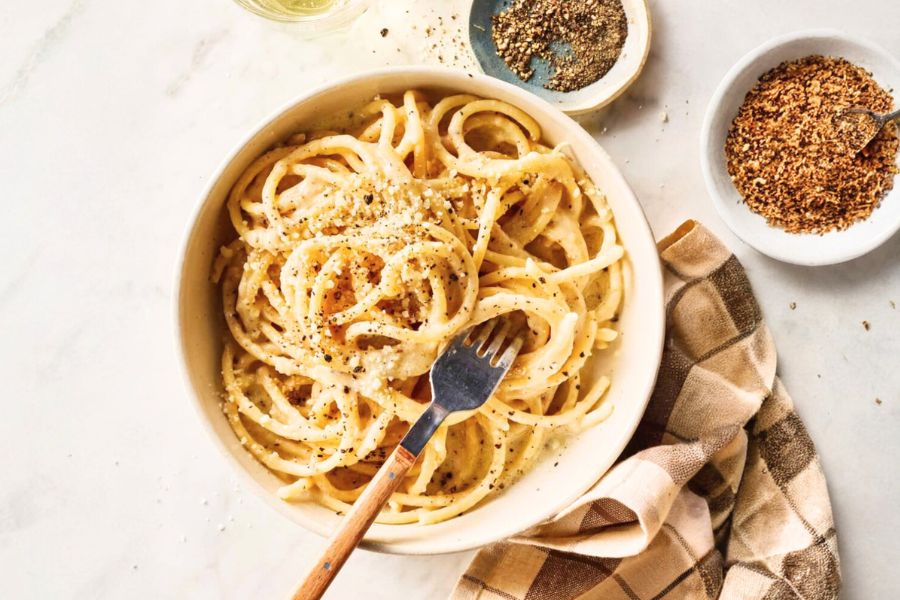Prepare the Pasta Water and Cook Pasta: Fill a large pot with water, add a generous pinch of salt, and bring it to a rolling boil. Once boiling, add the bucatini pasta and cook according to package instructions until just tender but still firm to the bite (al dente). Stir occasionally to prevent sticking.
Toast the Pepper and Melt Butter: While the pasta cooks, place a 10-inch nonstick skillet over medium heat. Add the unsalted butter and let it melt completely. Sprinkle in the freshly cracked black pepper and toast it gently for about 30 seconds, allowing its aroma to deepen and infuse the butter. Remove the skillet from heat to prevent burning.
Transfer Pasta and Create Sauce Base: When the pasta is nearly al dente, use tongs to lift it directly from the boiling water and place it into the skillet with the butter and pepper mixture. Be sure to also add about ⅓ cup of the hot pasta water to the pan—this starchy liquid is key to emulsifying the sauce.
Incorporate Cheese and Toss: Add half of the grated Pecorino Romano cheese to the pasta and toss vigorously to coat the strands evenly. Then, gradually add the remaining cheese while continuing to toss and stir. The heat and pasta water will melt the cheese, forming a creamy, glossy sauce that clings beautifully to each piece of pasta. If the sauce seems too thick or dry, add a tablespoon or two more pasta water, tossing until you reach a smooth consistency.
Serve Immediately: Plate the pasta right away, garnishing with extra Pecorino and a fresh grind of black pepper to taste. Enjoy warm for the best flavor and texture.
